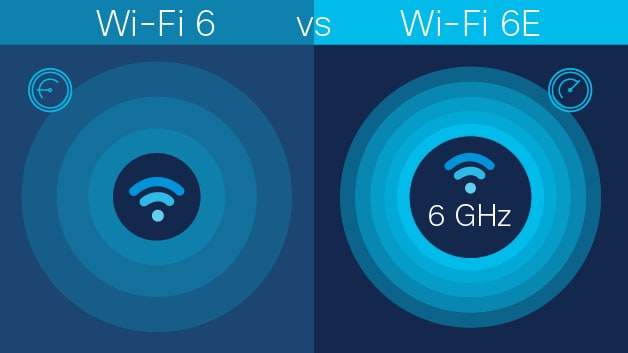Bringing the Wi-Fi 6 (802.11ax) wireless standard to the 6-GHz frequency range is what Wi-Fi 6E does. While the current Wi-Fi standard, Wi-Fi 6, is the foundation upon which Wi-Fi 6E is built, only Wi-Fi 6E devices and software are compatible with the 6-GHz band.
Wi-Fi 6 vs Wi-Fi 6E: How are they Different?
Wi-Fi 6E is an upgrade to the Wi-Fi 6 standard that effectively creates a “fast lane” for devices and software that are compatible with it. As a consequence, wireless speeds are increased and latency is decreased. The second distinction is that Wi-Fi 6 is compatible with older Wi-Fi standards whereas Wi-Fi 6E is not.
However, the new extension’s ability to establish a fast lane is contingent on the use of only Wi-Fi 6E devices, which are becoming more generally accessible as of this writing. The 6-GHz band is optimal because of the low levels of congestion and interference.
Soon, the U.S. Federal Communications Commission (FCC) will allow unlicensed usage of the 6-GHz spectrum. The action by the FCC freed up 1200 MHz of bandwidth for usage by Wi-Fi 6E devices, which have an additional radio for use in the 6-GHz band.
More than twice as much Wi-Fi bandwidth is available on the 6-GHz spectrum than on the 5-GHz channel. Support for smart buildings, workplaces, and the ever-expanding Internet of Things prompted the FCC to expand Wi-Fi into the 6-GHz frequency spectrum (IoT).
Japan, Mexico, South Korea Brazil, Chile, the European Union, Taiwan, the United Arab Emirates, and the United Kingdom are only some of the nations and regulatory organizations that are providing 6-GHz unlicensed spectrum to their citizens.
Does Wi-Fi 6E Need New Infrastructure?
Yes. In order to take advantage of Wi-Fi 6E and its increased speeds, IT departments will need to evaluate their existing wireless infrastructure and replace routers, switches, access points, and other crucial pieces as appropriate.
Organizations may continue using their current Wi-Fi 6 devices and apps that operate on the 2.4GHz and 5GHz bands even while they update their infrastructure to enable Wi-Fi 6E.
Reducing congestion on other frequencies and improving the user experience may be achieved via the utilization of the 6-GHz spectrum and the adoption of devices and apps developed for Wi-Fi 6E.
Best Wi-Fi 6E Features
The modern workforce utilizes a wide range of in-office, remote, and hybrid work arrangements, and as a result, the network must support all of these employees and the devices and applications they rely on to be productive and secure.
Today’s mobile, collaborative, and data-driven enterprises need wireless networks that are adaptable, scalable, dependable, and secure. For this reason, the following advantages of Wi-Fi 6E stand out as the most crucial:
- Speed
Smartphones, wireless laptops, wearable, and Internet of Things (IoT) sensors are all examples of Wi-Fi 6E devices that can use the 6-GHz band to send data at high speeds. In addition, there are no sluggish, outdated gadgets vying for bandwidth in this fresh area of the radio spectrum.
Given these benefits, Wi-Fi 6E is a great choice for facilitating bandwidth-intensive activities like online gaming, teleconferencing, and the streaming of high-definition videos. AR/VR and the transmission of extraordinarily massive data files, such as medical MRI pictures, are two examples of applications.
- Security
Wi-Fi 6E helps businesses who need or wish to implement very secure networks. All Wi-Fi 6E devices are required to use Wi-Fi Protected Access 3 (WPA3), which is not compatible with WPA2 security, per a mandate from the Wi-Fi Alliance. Taking these precautions may encourage users to upgrade their most secure connections to the 6-GHz frequency range.
In addition, the Wi-Fi Alliance mandates that the 6GHz band be supported through certifications for Wi-Fi Enhanced Open. The Opportunistic Wireless Encryption (OWE) protocol serves as the foundation for the Enhanced Open specification. Internet Engineering Task Force RFC 8110 and the Wi-Fi Alliance Opportunistic Wireless Specification both provide details on OWE. OWE, like Wi-Fi 6E, is optional.
OWE safeguards the privacy of each endpoint pair’s exchange of data from prying eyes. Need more information like this? Keep visiting this website often then.

